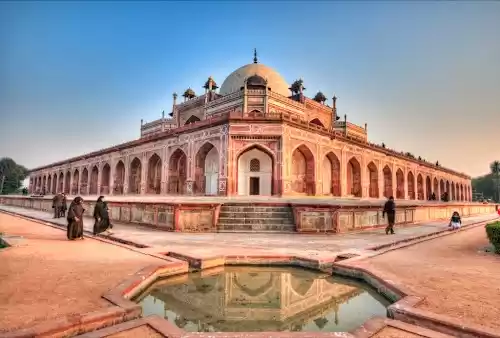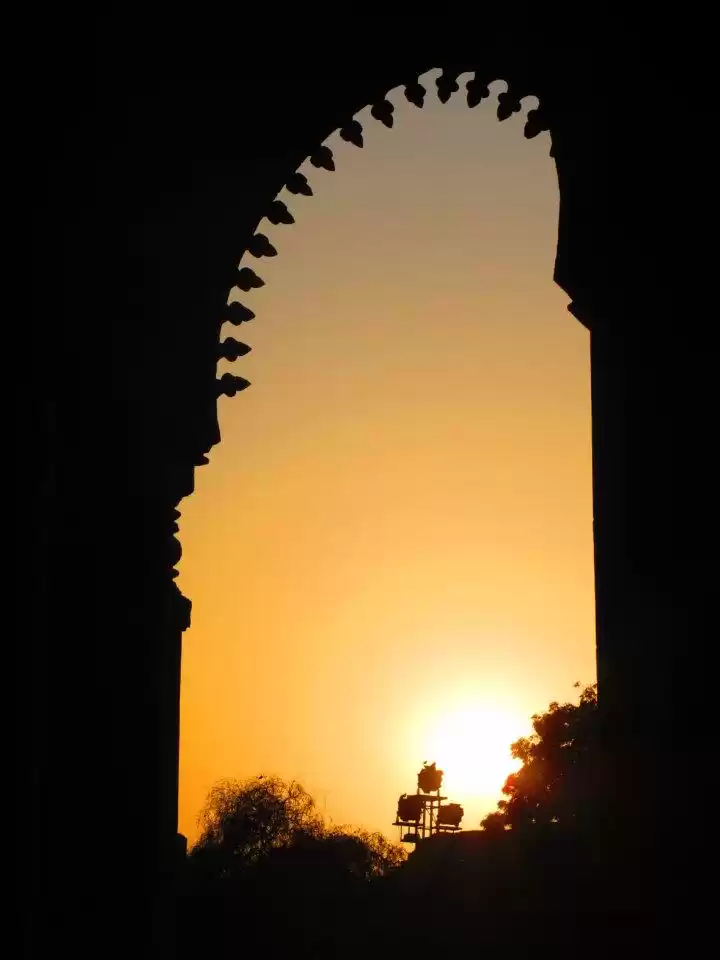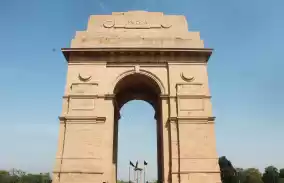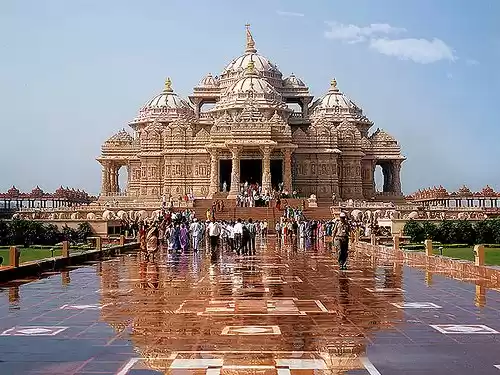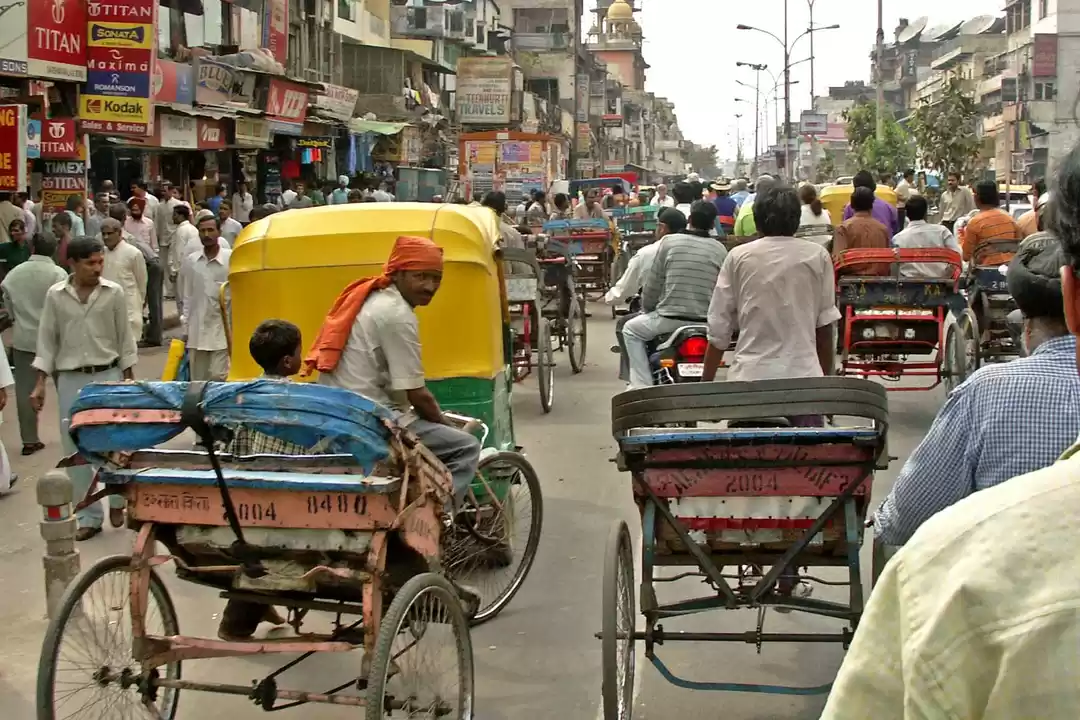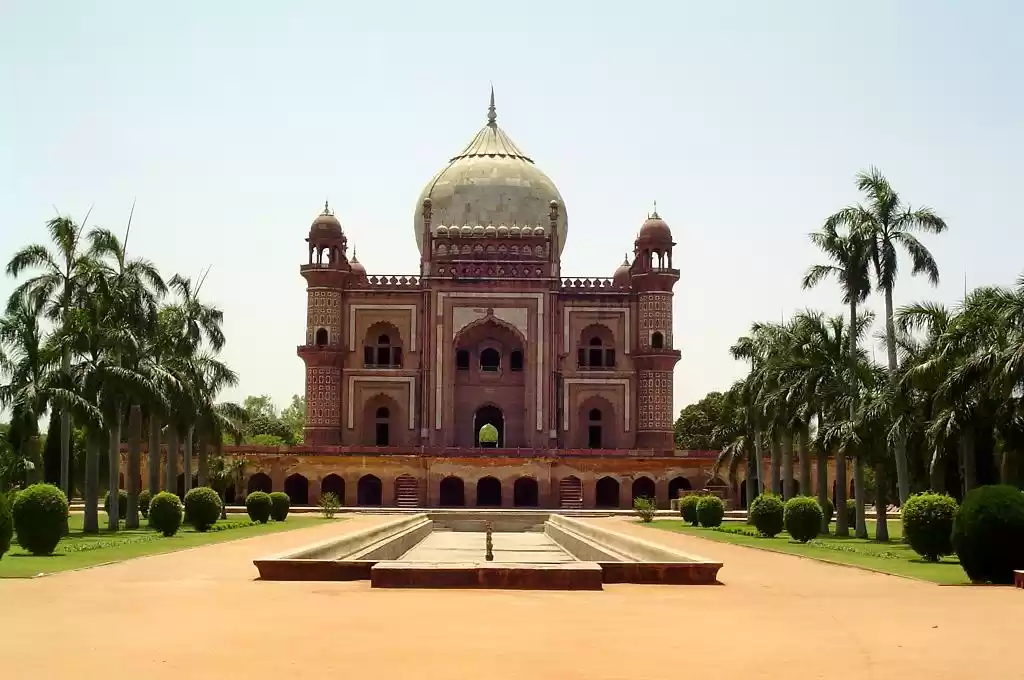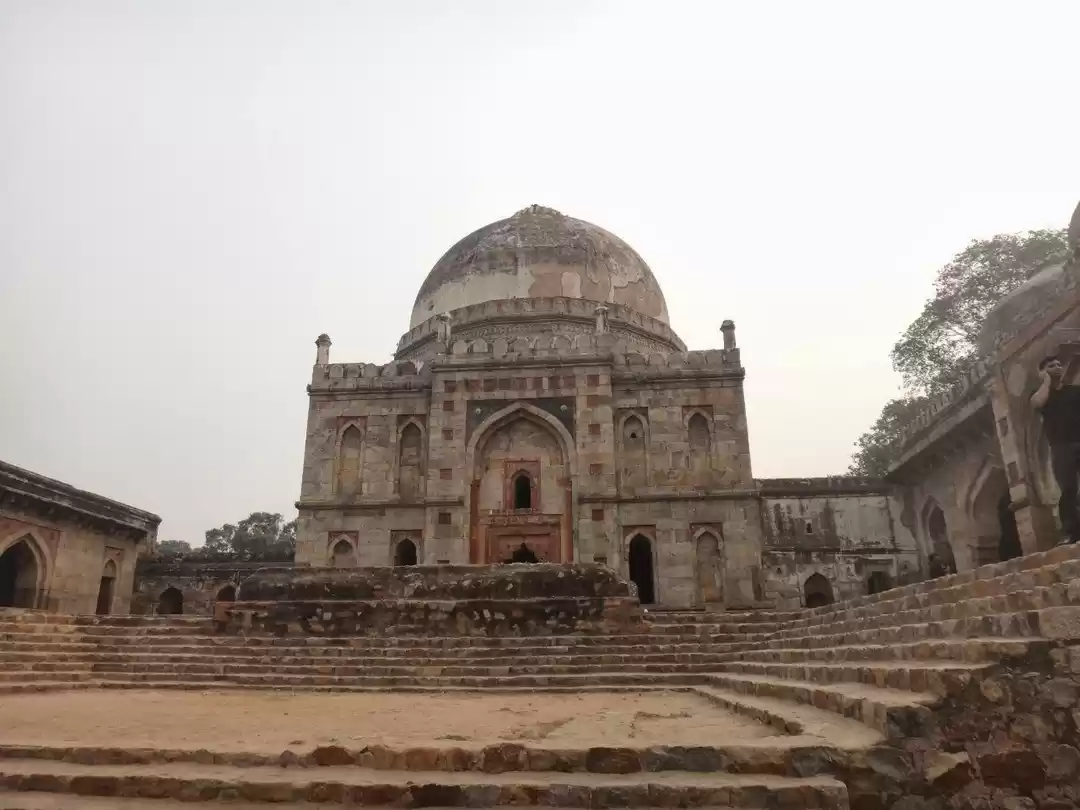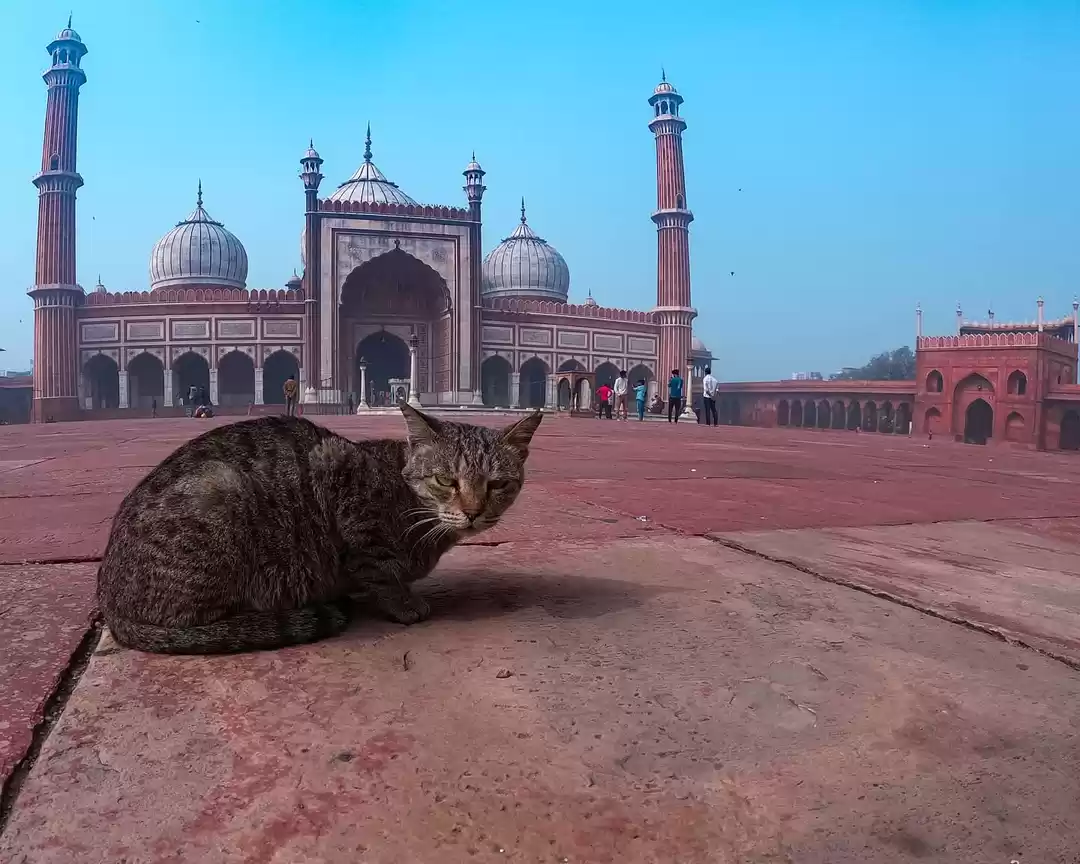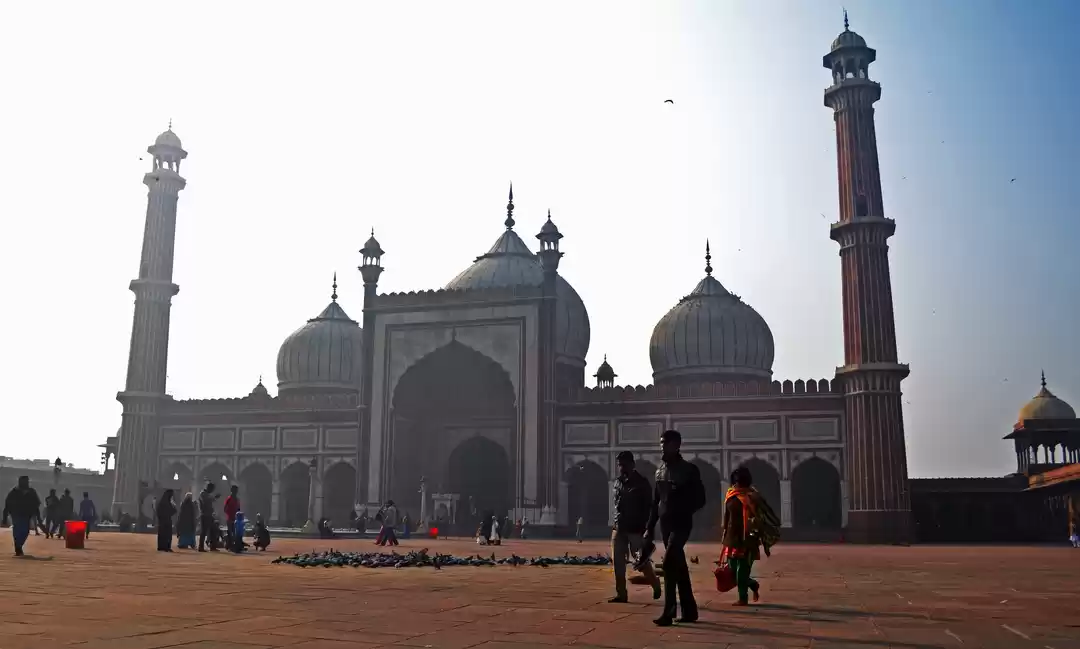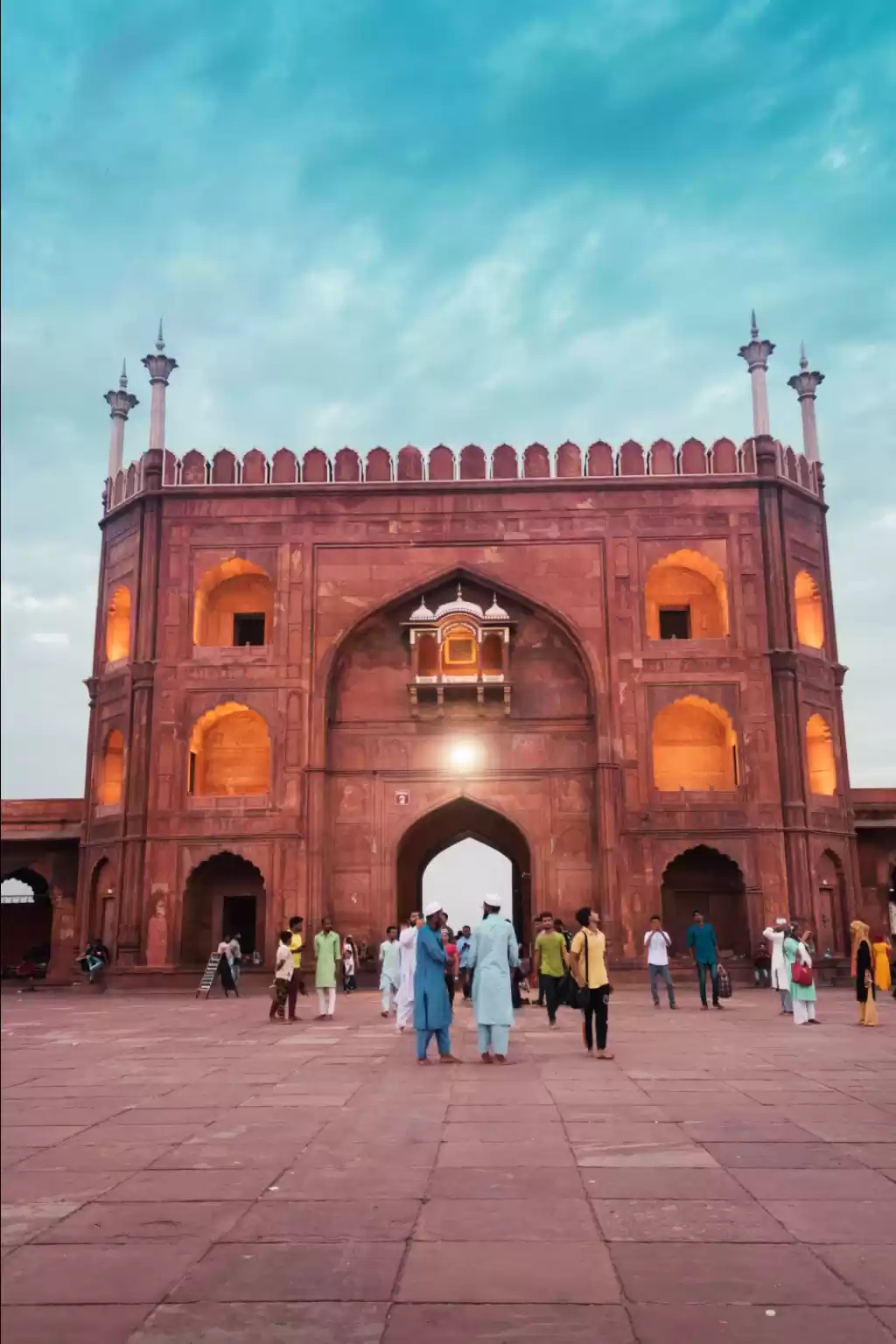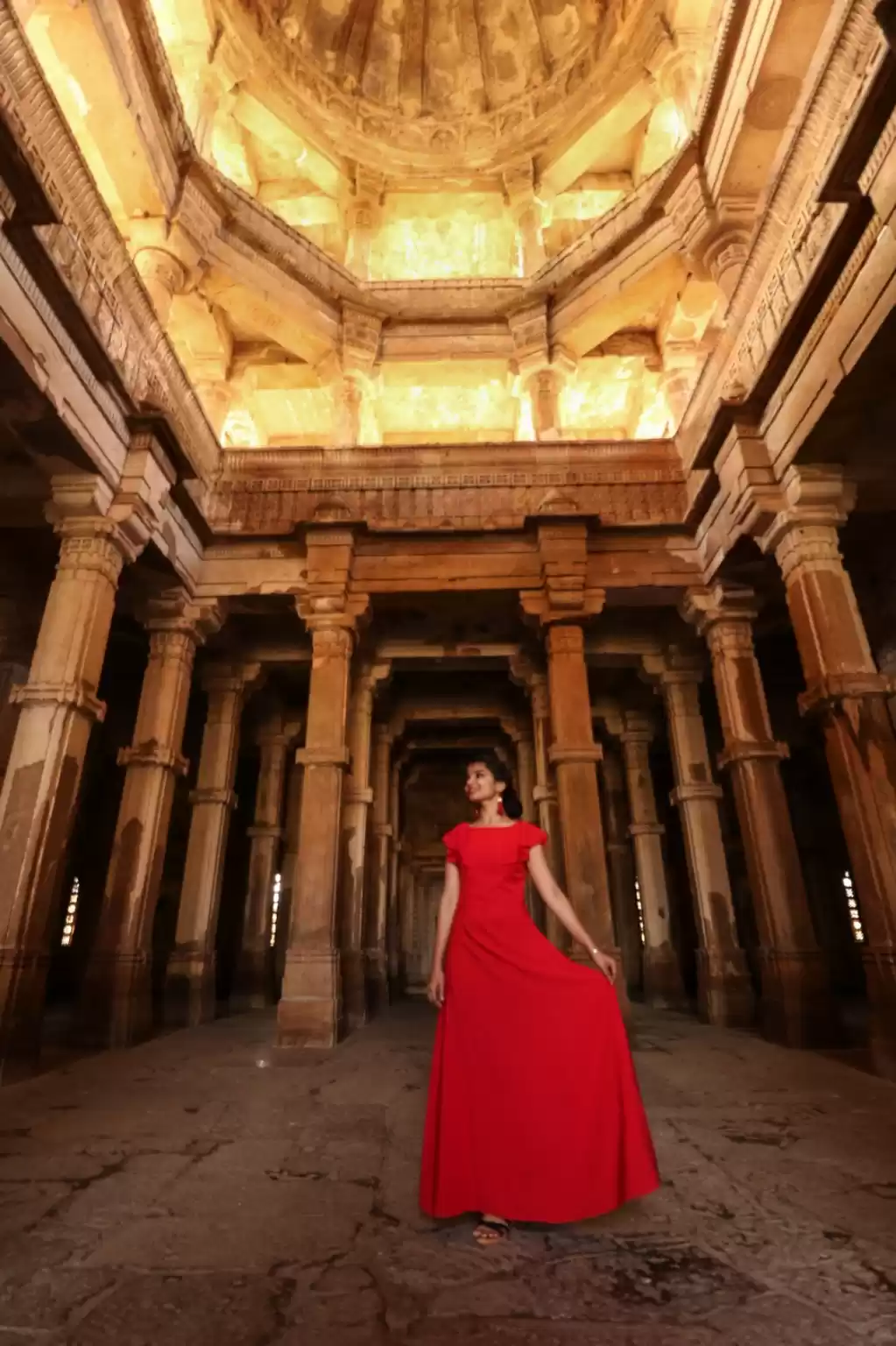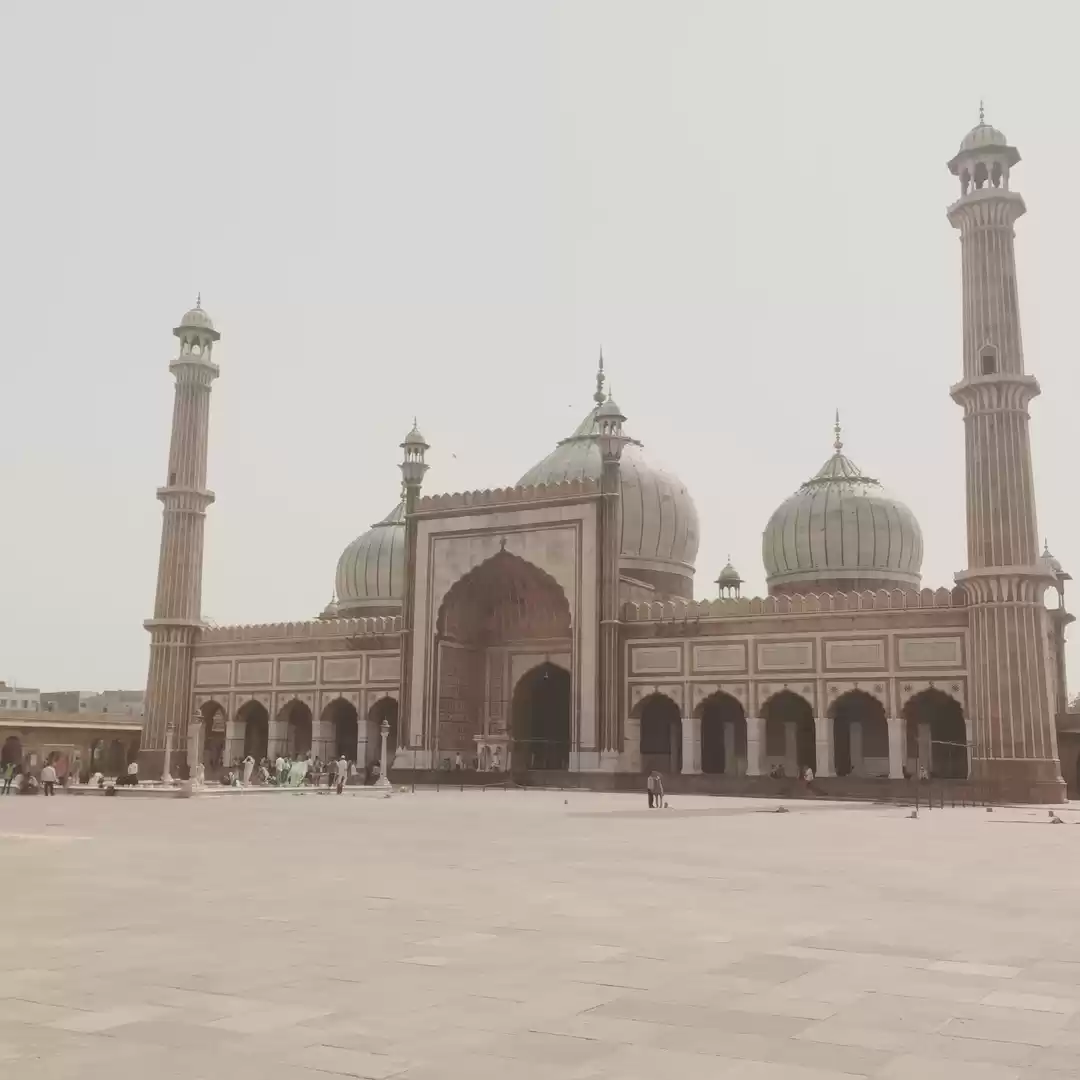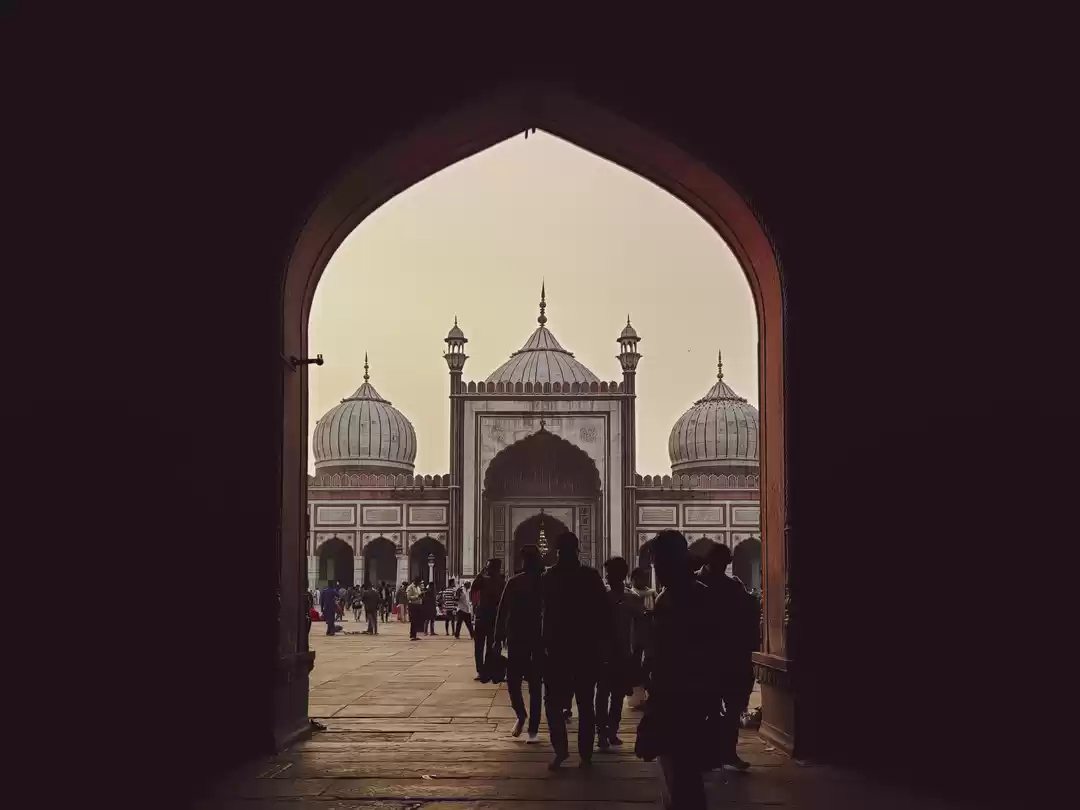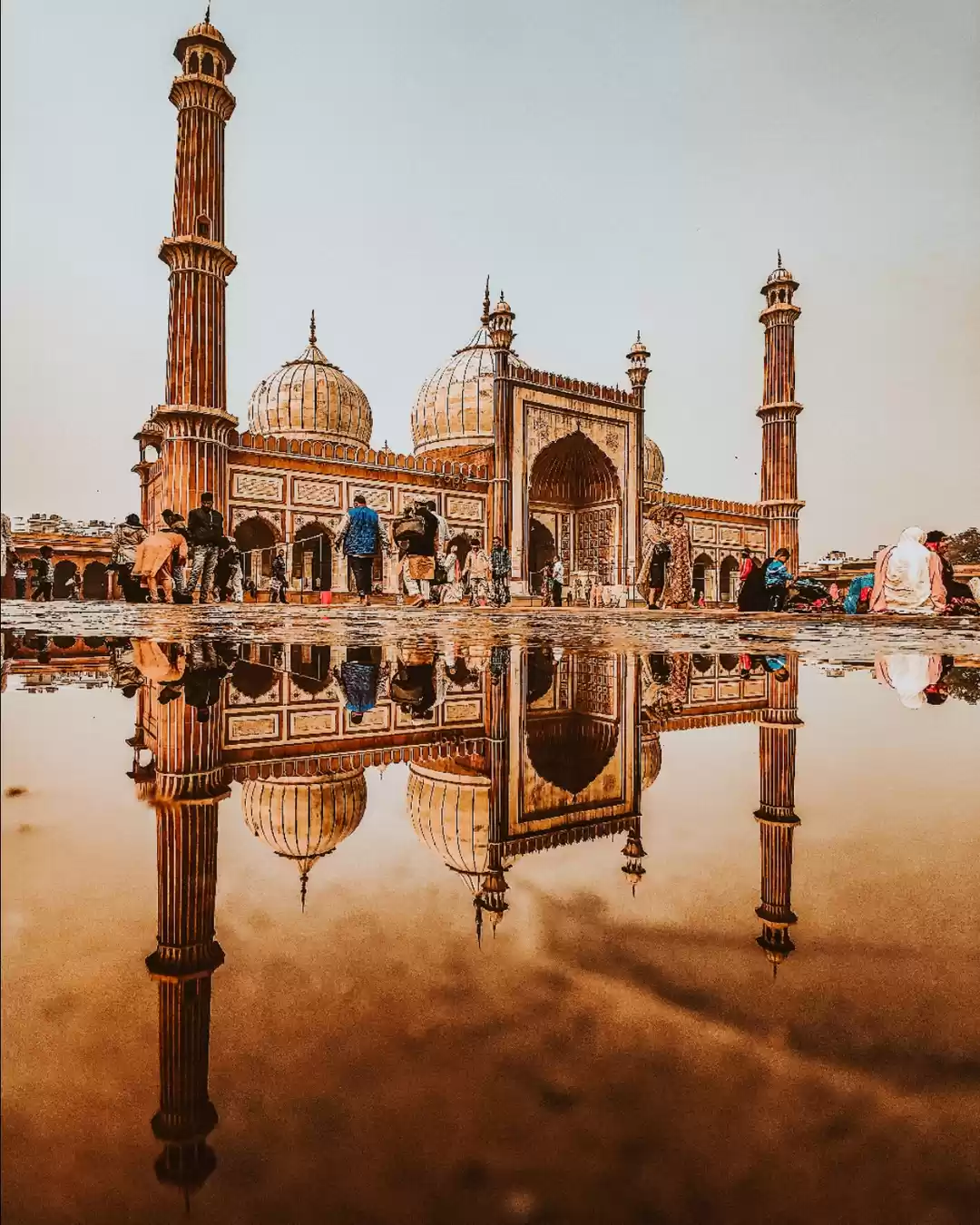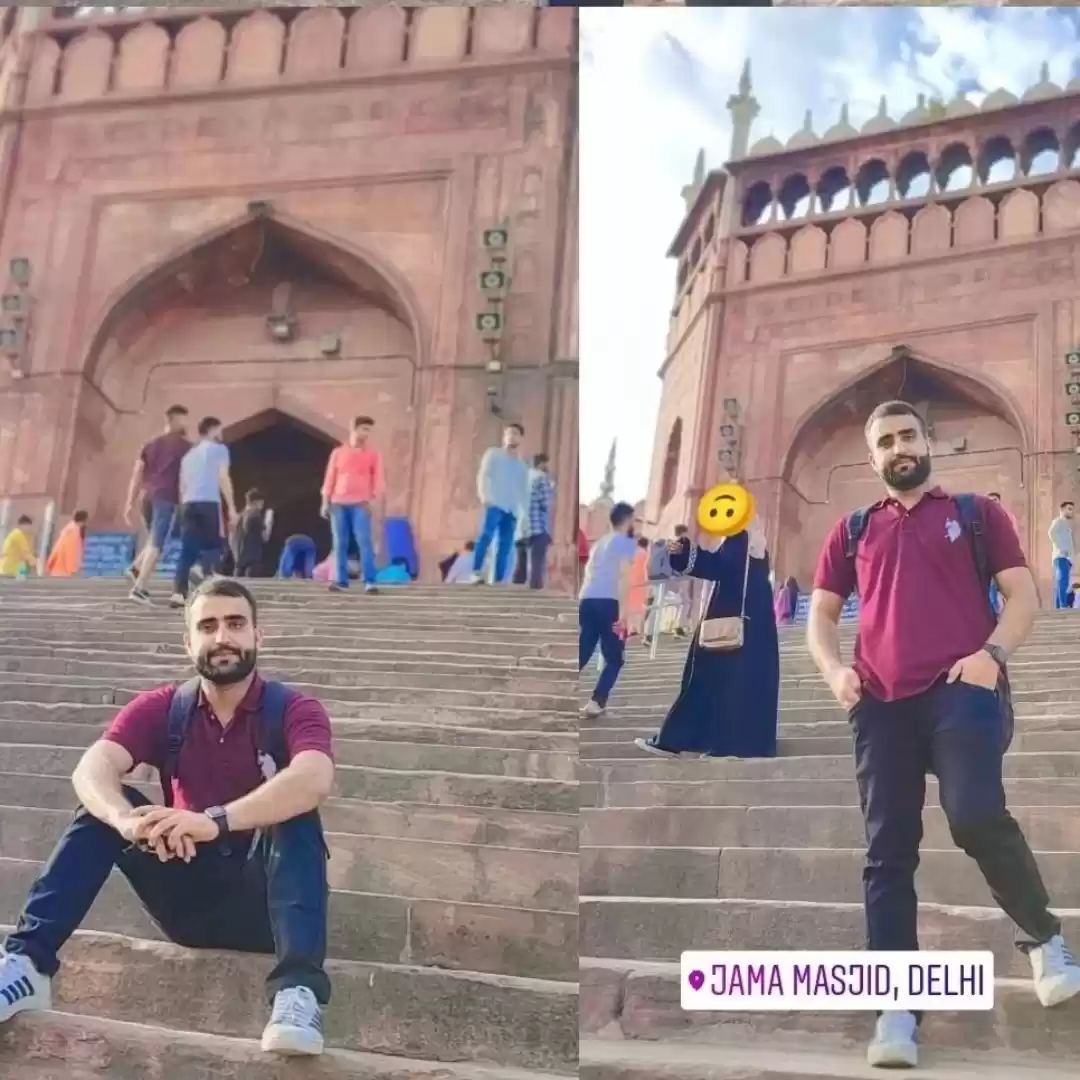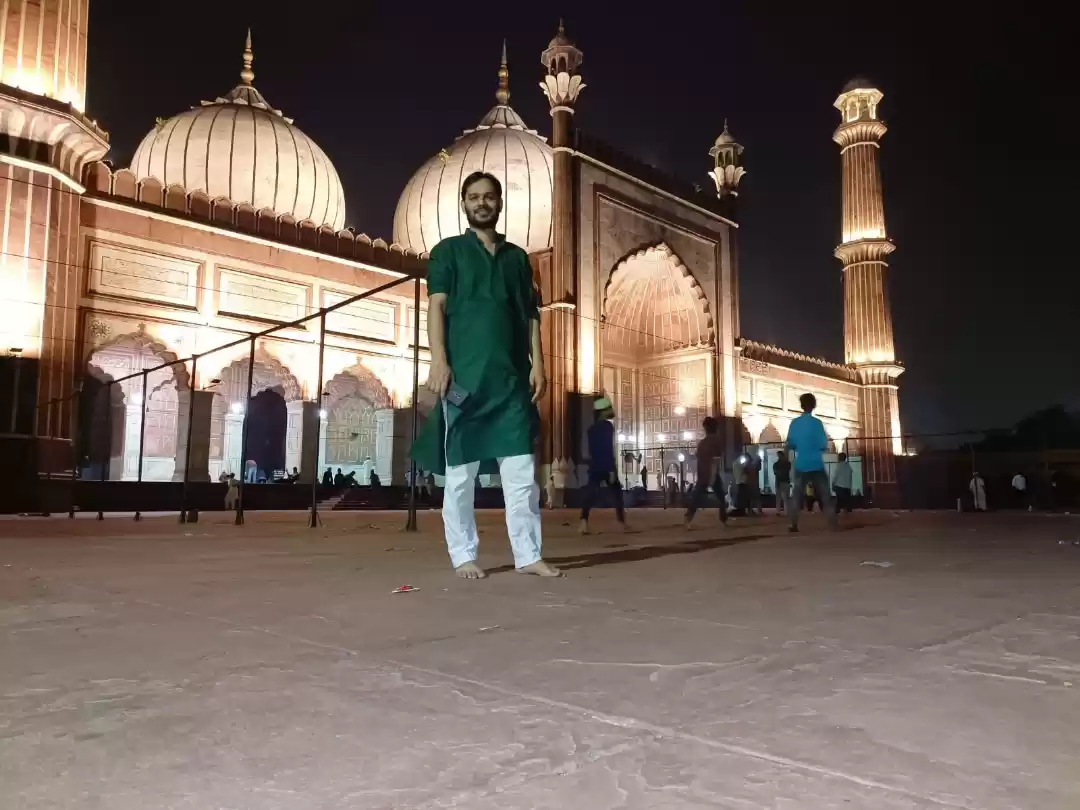Are you looking for a place to experience the rich and diverse culture of India? Do you want to witness the stunning beauty and grandeur of one of the largest and most beautiful mosques in the world?
If yes, then you should definitely visit Jama Masjid, the crown jewel of Delhi’s Old City. Jama Masjid, also known as Masjid-i Jahan-Numa, meaning “mosque commanding view of the world”, is a masterpiece of Mughal architecture and a symbol of India’s Islamic heritage.
In this article, we will tell you everything you need to know about Jama Masjid, its history, architecture, facts, and how to visit it. Read on to discover why Jama Masjid is a must-see destination for anyone visiting Delhi.
History of Jama Masjid
Jama Masjid was built by the Mughal emperor Shah Jahan, who also built the Taj Mahal and the Red Fort. Shah Jahan wanted to create a magnificent mosque that would reflect his power and glory, and serve as the main place of worship for his subjects. He commissioned the construction of Jama Masjid in 1644, and it took 12 years and 10 lakh rupees to complete. The mosque was inaugurated by Shah Jahan’s son and successor Aurangzeb in 1656.
Jama Masjid has witnessed many historical events and changes over time. It was the site of the coronation of Bahadur Shah Zafar, the last Mughal emperor, in 1837. It was also the center of the 1857 revolt against the British rule, when thousands of rebels gathered at the mosque to fight for India’s independence. During the partition of India in 1947, Jama Masjid provided shelter and relief to thousands of refugees who migrated from Pakistan. Today, Jama Masjid is not only a place of worship, but also a symbol of India’s unity and diversity.
Architecture of Jama Masjid
Jama Masjid is a marvel of Mughal and Persian architecture, blending red sandstone and white marble in a harmonious and elegant way. The mosque covers an area of 14 acres and can accommodate up to 25,000 people at a time. The mosque has three gateways, four towers, two minarets, a large courtyard, and a spacious prayer hall.
The main gateway is on the east side, facing the Red Fort. It is decorated with intricate carvings and inscriptions from the Quran. The gateway leads to a flight of stairs that takes you to the courtyard, which is surrounded by arched galleries and domed pavilions. The courtyard has a marble fountain in the center, where worshippers perform ablutions before entering the prayer hall.

The prayer hall is on the west side, facing Mecca. It has three onion-shaped domes with black and white stripes, and two slender minarets that rise to a height of 40 meters. The prayer hall has seven arched entrances, each with a pointed arch and a balcony. The central arch is the largest and most ornate, with a high ceiling and a golden canopy. The prayer hall also has a marble pulpit, where the imam delivers sermons, and a niche, where a copy of the Quran is kept.
The mosque also has several other features and elements that add to its beauty and significance. For example, it has several inscriptions from the Quran in calligraphy on its walls and pillars. It also has several relics related to Prophet Muhammad, such as his footprints, sandals, hair, and beard. These relics are kept in a red velvet cloth and displayed to the public on special occasions.
Facts about Jama Masjid
Jama Masjid is not only a stunning mosque but also a fascinating place full of interesting facts. Here are some of them:

1. Jama Masjid is one of the largest mosques in India and one of the last architectural works of Shah Jahan.
2. Jama Masjid was originally called Masjid-i Jahan-Numa, meaning “mosque commanding view of the world”. It was later renamed as Jama Masjid, meaning “Friday Mosque”, as it hosts special prayers on Fridays.
3. Jama Masjid was built by more than 5,000 workers over 12 years. It used about 12,000 tonnes of red sandstone and 3,000 tonnes of white marble.
4. Jama Masjid has three gateways: the eastern gateway is for the royal family, the northern gateway is for men, and the southern gateway is for women.
5. Jama Masjid has four towers: one at each corner of the courtyard. The southern tower offers a panoramic view of Delhi’s Old City.
6. Jama Masjid has two minarets: one on each side of the prayer hall. They are made of red sandstone with white marble stripes. They have five storeys, each with a projecting balcony.
7. Jama Masjid has three domes: one over each entrance of the prayer hall. They are made of white marble with black stripes. They have golden spires on top and lotus buds at the base.
8. Jama Masjid has a sundial: on the top of the central entrance of the prayer hall. It is made of iron and has a metal pointer that shows the time of the day.
9. Jama Masjid has a library: on the north side of the courtyard. It has a collection of ancient and rare books on various subjects, such as religion, history, and medicine.
Also check out: Ramadan Celebrations At Jama Masjid Are A Sight To Behold! These Stunning Photographs Are Proof
Visiting Jama Masjid
If you are planning to visit Jama Masjid, here are some useful information and tips for you:

- Jama Masjid is open from 7 am to 12 pm and 1:30 pm to 6:30 pm every day. It is closed for tourists during prayer times, which are five times a day.
- Jama Masjid is free to enter, but you have to pay a nominal fee of 300 rupees if you want to take photos or videos inside the mosque.
- Jama Masjid is located in Old Delhi, near Chandni Chowk. The nearest metro station is Chandni Chowk on the Yellow Line. You can also take a rickshaw, a taxi, or a bus to reach the mosque.
- Jama Masjid has a dress code for visitors. You have to cover your head, shoulders, and legs. You can borrow a robe from the mosque for free if you don’t have appropriate clothing.
- Jama Masjid has a shoe rack where you have to leave your shoes before entering the mosque. You can also carry your shoes in a plastic bag with you.
- Jama Masjid has a security check where you have to pass through a metal detector and a bag scanner. You have to follow the instructions of the security personnel and respect the rules of the mosque.
Places To Visit Near Jama Masjid
Red Fort: The majestic fort that was the residence of the Mughal emperors for nearly 200 years. It is a UNESCO World Heritage Site and a museum that showcases the history and culture of India.
Chandni Chowk: The bustling market that is one of the oldest and largest in India. It is famous for its variety of shops, food stalls, and historical buildings.
Jama Masjid Market: The market that is adjacent to the mosque and sells various items related to Islam, such as prayer mats, caps, books, etc.
Best Places To Eat Near Jama Masjid
If you are looking for some of the best places to eat near Jama Masjid, you are in luck. Jama Masjid is surrounded by many restaurants that offer delicious and authentic Mughlai cuisine, as well as other dishes. Here are some of the restaurants that you should try:

Karim’s:
This is one of the oldest and most famous restaurants near Jama Masjid, which serves mouth-watering non-vegetarian dishes. You can enjoy exotic pulao, naan, roti, and kebab, along with the main course. Some of the must-try dishes are mutton burra, chicken changezi, mutton korma, and phirni. The restaurant is open from 7 am to 11 pm and costs around Rs. 800 for two people.
Al Jawahar:
This is another popular restaurant near Jama Masjid, which serves succulent non-vegetarian dishes. You can relish chicken korma, biryani, nihari, paya, and more. Some of the must-try dishes are chicken jahangiri, mutton stew, and shahi tukda. The restaurant is open from 7 am to midnight and costs around Rs. 600 for two people.
Aslam Chicken:
This is a small shop near Jama Masjid, which serves the best chicken tikka with butter curd. The chicken is marinated in spices and cooked over charcoal, giving it a smoky and juicy flavor. The butter curd adds a creamy and tangy touch to the dish. The shop is open from 6 pm to midnight and costs around Rs. 300 for two people.
Haji Mohd. Hussain Fried Chicken:
This is another small shop near Jama Masjid, which serves the best fried chicken in Delhi. The only dish it serves is fried chicken with roti, but it is so crispy and tender that you will not need anything else. The shop is open from 9 am to 11 pm and costs around Rs. 200 for two people.
Hotel Zaika:
This is a restaurant near Jama Masjid, which serves tasty non-vegetarian dishes, especially tandoori items. You can savor chicken changezi, mutton rogan josh, chicken tikka masala, and more. Some of the must-try dishes are chicken malai tikka, mutton seekh kebab, and paneer butter masala. The restaurant is open from 11 am to 11 pm and costs around Rs. 500 for two people.
These are some of the best places to eat near Jama Masjid that will satisfy your taste buds and make your visit memorable. Bon appetit!
You may also like to check out: A food guide to the legendary Jama Masjid eateries in Old Delhi
Jama Masjid is a magnificent mosque that is worth visiting for anyone who wants to experience the beauty and diversity of India. It is not only a place of worship but also a place of history, culture, and art. It is a place that will inspire you with its architecture, impress you with its facts, and enchant you with its atmosphere. So, what are you waiting for? Plan your visit Jama Masjid, Delhi’s magnificent mosque.


























